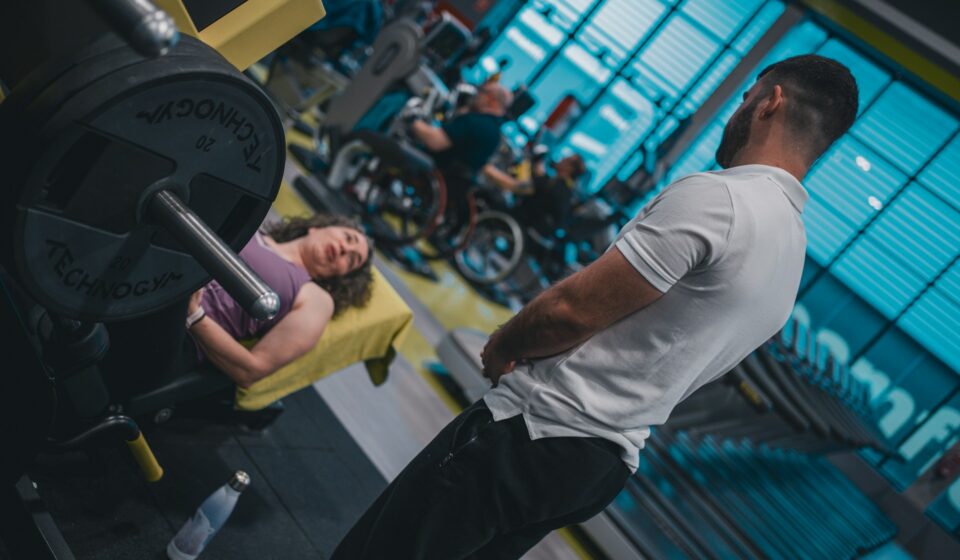
The Science Behind Faster Fitness Results with Professional Guidance
Getting fit is more than just showing up to the gym and hoping for the best. Many people spend months following generic workout routines, only to see minimal progress and eventually lose motivation. The difference between those who achieve their fitness goals and those who struggle often comes down to one key factor: professional guidance.
Table Of Content
- The Science of Personalized Training Programs
- Proper Form: The Foundation of Safe Progress
- Progressive Overload: The Key to Continuous Improvement
- Accountability and Motivation Systems
- Nutrition Integration and Lifestyle Optimization
- Injury Prevention and Rehabilitation
- Technology and Data-Driven Approaches
- Making the Investment Work for You
- Your Next Steps Toward Better Results
A personal trainer brings expertise, accountability, and personalized strategies that can dramatically accelerate your fitness journey. They understand the science behind effective exercise programming, proper form, and progressive overload. More importantly, they know how to adapt these principles to your unique body, goals, and lifestyle.
The data support this approach. Research consistently shows that people who work with fitness coaching professionals achieve better workout results in less time compared to those who exercise alone. This isn’t just about motivation—though that’s certainly part of it. It’s about applying evidence-based methods that optimize every aspect of your training.
The Science of Personalized Training Programs
Generic workout plans treat everyone the same, but your body is unique. A qualified personal trainer conducts thorough assessments to understand your current fitness level, movement patterns, muscle imbalances, and injury history. This information becomes the foundation for designing a program that works specifically for you.
Consider muscle fiber composition as an example. Some people have more fast-twitch muscle fibers, making them naturally better suited for explosive movements and strength training. Others have predominantly slow-twitch fibers, giving them advantages in endurance activities. A professional trainer can identify these characteristics and adjust your program accordingly.
Recovery needs also vary significantly between individuals. Factors like age, stress levels, sleep quality, and training history all influence how quickly your body adapts to exercise. Fitness coaching takes these variables into account, ensuring you’re training hard enough to stimulate progress without overdoing it and risking burnout or injury.
Proper Form: The Foundation of Safe Progress
Poor exercise technique is one of the fastest ways to derail your fitness progress. It increases injury risk, reduces the effectiveness of each movement, and creates compensation patterns that can lead to long-term problems. A personal trainer serves as your technique guardian, ensuring every rep counts.
Real-time feedback during workouts is invaluable. When you’re focused on pushing through a challenging set, it’s easy to let form break down. Your trainer can spot these issues immediately and make corrections, teaching you what proper movement feels like. This kinesthetic awareness carries over to future workouts, even when you’re training alone.
Video analysis is another powerful tool many trainers use. Recording your movements from different angles reveals subtle form issues that might not be obvious in the moment. These insights help refine your technique and prevent the development of bad habits that could limit your progress.
Progressive Overload: The Key to Continuous Improvement
Your body adapts quickly to exercise, which means yesterday’s challenging workout becomes today’s warm-up. Progressive overload—gradually increasing the demands placed on your muscles—is essential for continued progress. However, implementing this principle effectively requires careful planning and expertise.
A personal trainer tracks your performance metrics and knows exactly when and how to increase the challenge. This might involve adding weight, increasing repetitions, reducing rest periods, or introducing more complex movement patterns. The timing of these progressions matters significantly. Push too hard too fast, and you risk injury or overtraining. Progress too slowly, and you’ll plateau.
Periodization takes this concept further by organizing your training into specific phases, each with different focuses and intensities. This systematic approach prevents adaptation and keeps your body responding to the training stimulus. Most people training on their lack the knowledge to implement effective periodization strategies.
Accountability and Motivation Systems
Even the most dedicated individuals experience motivation dips. Life gets busy, progress slows, and it becomes easy to skip workouts or reduce effort. This is where the accountability aspect of fitness coaching becomes crucial for maintaining consistent workout results.
Having scheduled appointments with a personal trainer creates external motivation that goes beyond relying on willpower alone. You’re less likely to skip a session when someone is expecting you and when you’ve made a financial commitment. This consistency is vital because fitness progress depends more on what you do regularly than what you do occasionally.
Trainers also help you set realistic short-term goals that build momentum toward your larger objectives. Instead of focusing solely on losing 30 pounds, you might work toward performing your first unassisted pull-up or deadlifting your body weight. These milestone achievements provide regular positive reinforcement that keeps you engaged in the process.
Nutrition Integration and Lifestyle Optimization
Exercise is just one piece of the fitness puzzle. Nutrition, sleep, stress management, and recovery practices all influence your results. Many personal trainers have expanded their expertise to include these areas, providing holistic guidance that addresses all factors affecting your progress.
Nutrition timing around workouts can significantly impact performance and recovery. Your trainer might recommend specific pre-workout meals to fuel your sessions or post-workout nutrition strategies to optimize muscle protein synthesis. This level of detail in your approach can accelerate results considerably.
Sleep and stress management often get overlooked, but they’re critical for both performance and recovery. Chronic stress elevates cortisol levels, which can interfere with muscle building and fat loss. Poor sleep disrupts hormone production and recovery processes. A knowledgeable trainer will help you identify and address these lifestyle factors.
Injury Prevention and Rehabilitation
Injuries don’t just set back your progress—they can derail it entirely. Prevention is always better than treatment, and this is another area where professional guidance proves invaluable. A personal trainer can identify movement dysfunction and muscle imbalances before they become problems.
Proper warm-up protocols, mobility work, and corrective exercises become seamlessly integrated into your routine. These aren’t just time-fillers before the “real” workout begins. They’re essential components that prepare your body for exercise and address any issues that could lead to injury.
When minor aches and pains do arise, an experienced trainer knows how to modify exercises to work around the issue while still maintaining progress. This adaptability prevents small problems from becoming major setbacks that require extended time away from training.
Technology and Data-Driven Approaches
Modern fitness coaching incorporates technology to track and analyze your progress in ways that weren’t possible before. Heart rate monitors, movement tracking devices, and strength measurement tools provide objective data about your performance and recovery.
This information helps optimize your training in real-time. If your heart rate variability indicates poor recovery, your trainer might adjust the day’s workout intensity. If strength measurements show progress plateauing in certain movements, modifications can be made immediately rather than waiting weeks to identify the issue.
Progress photos, body composition scans, and performance benchmarks create a comprehensive picture of your improvements. These objective measures help maintain motivation during periods when the scale might not reflect your progress, such as when you’re simultaneously building muscle and losing fat.
Making the Investment Work for You
Working with a personal trainer represents a significant investment, but the returns extend far beyond improved fitness. You’re investing in education that will serve you throughout your life. The knowledge, skills, and habits you develop under professional guidance continue benefiting you long after your training sessions end.
To maximize this investment, come prepared to each session. Have questions ready, be honest about your challenges, and actively participate in the learning process. The more engaged you are, the more valuable each session becomes.
Consider different training formats based on your needs and budget. One-on-one sessions provide maximum personalization but cost more. Small group training offers professional guidance at a lower per-session cost while still providing individual attention. Even occasional check-ins with a trainer can help refine your self-directed workouts.
Your Next Steps Toward Better Results
Professional fitness coaching transforms the way you approach exercise, nutrition, and overall health. Instead of hoping random workouts will eventually produce results, you’ll have a systematic, science-based approach designed specifically for your goals and circumstances.
Ready to experience the difference professional guidance makes? Research qualified trainers in your area who have experience working with clients who share similar goals to yours. Schedule consultations with a few candidates to find someone whose approach and personality align with your preferences.
Your fitness journey doesn’t have to be a series of trial-and-error experiments. With the right guidance, every workout becomes a strategic step toward your goals. Click here to start your search for a personal trainer who can accelerate your progress and help you achieve results you never thought possible.





